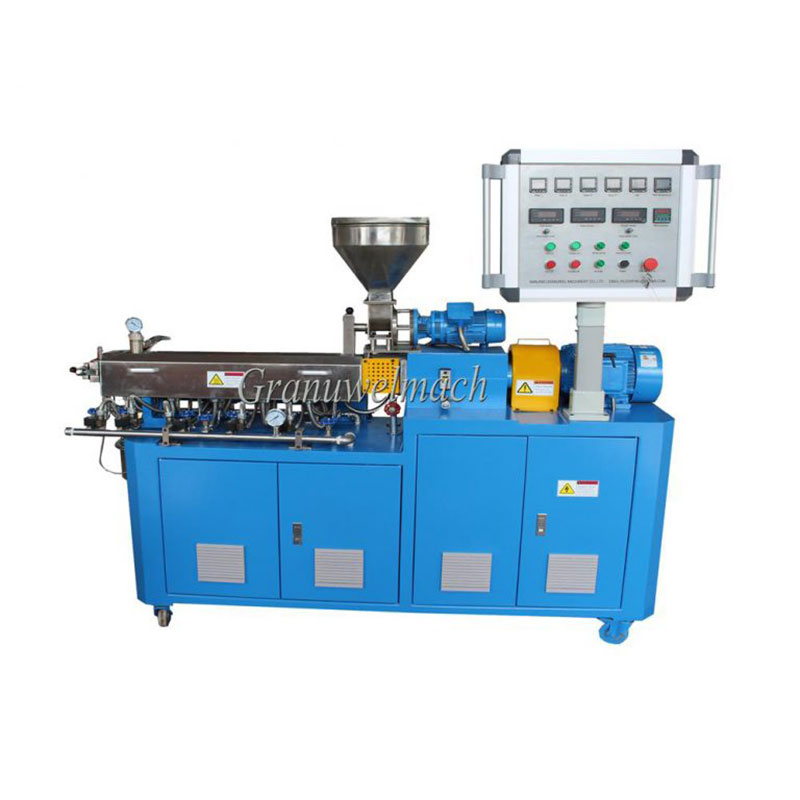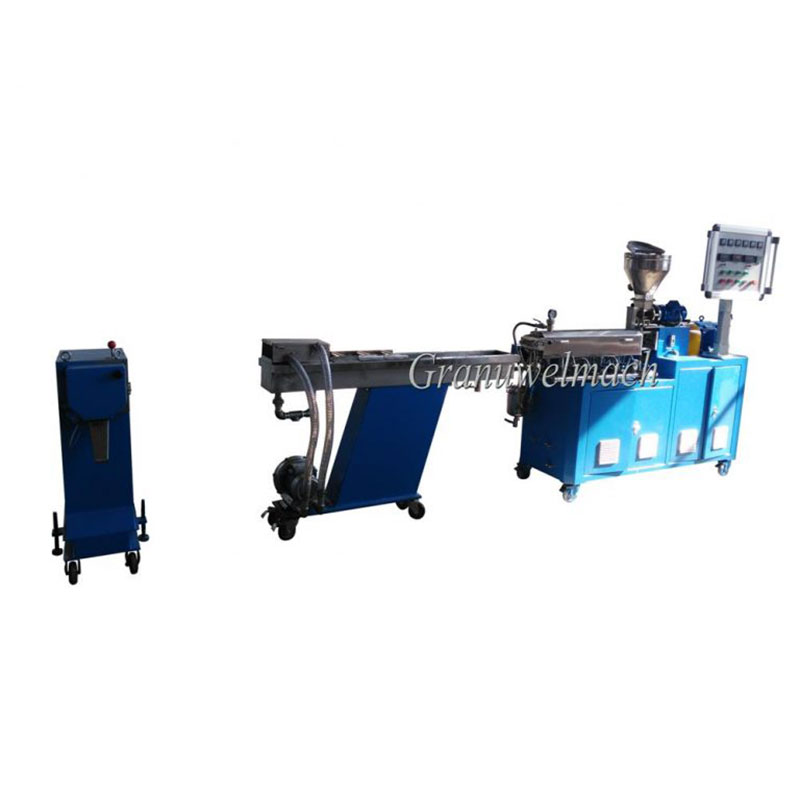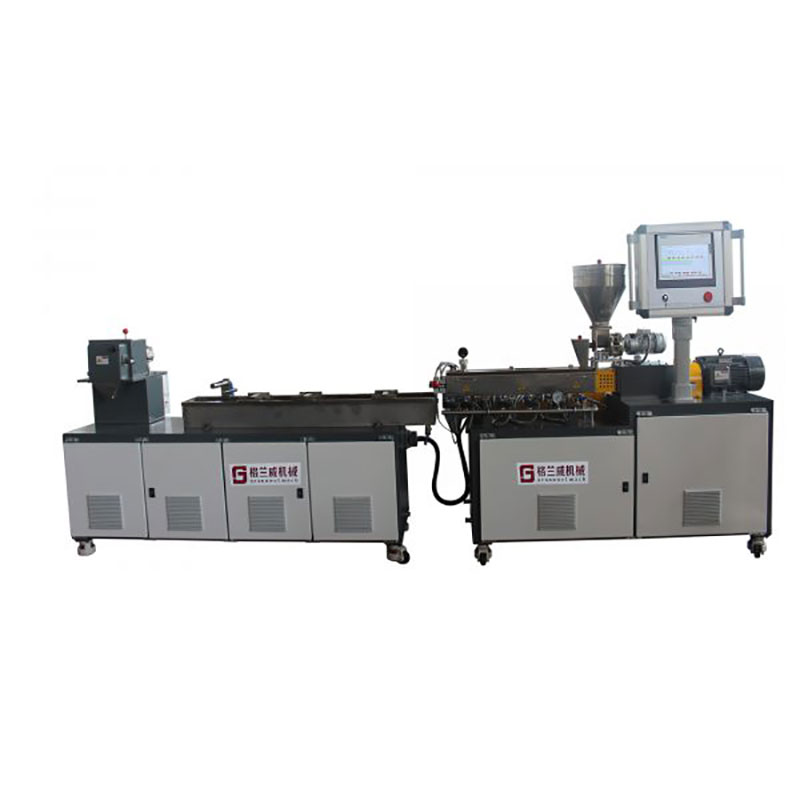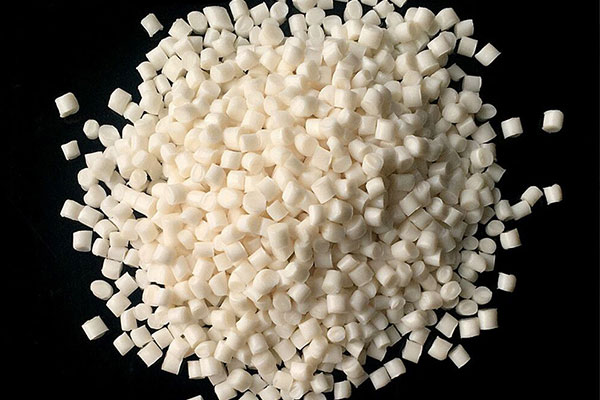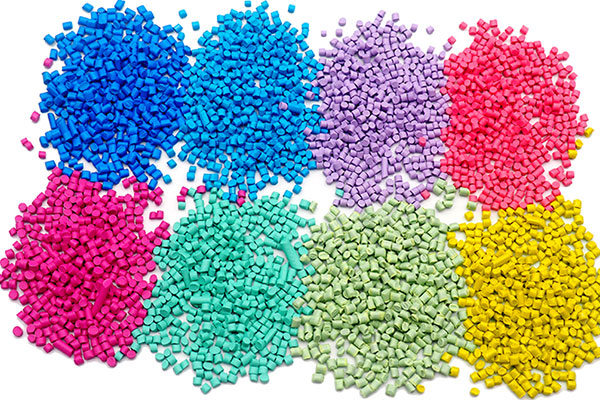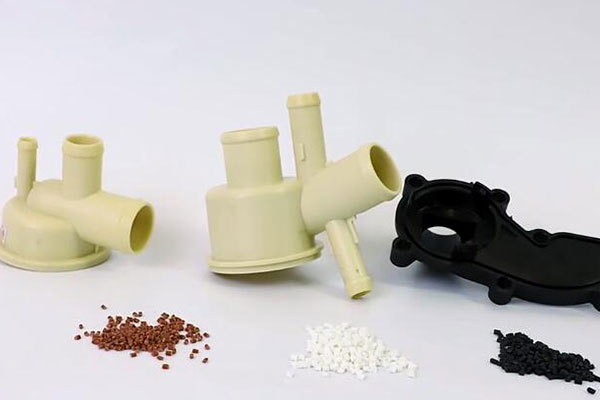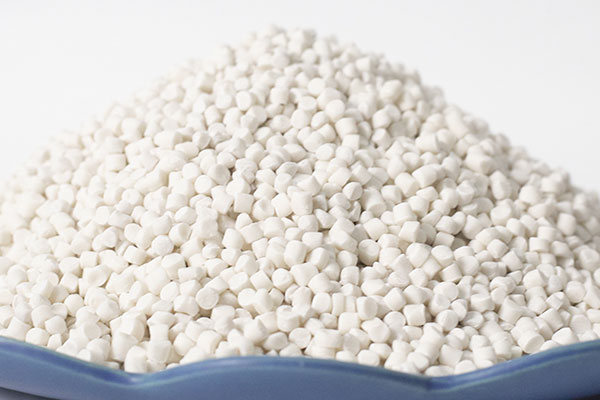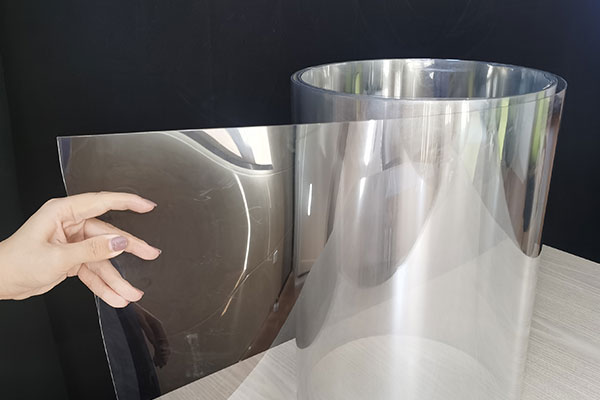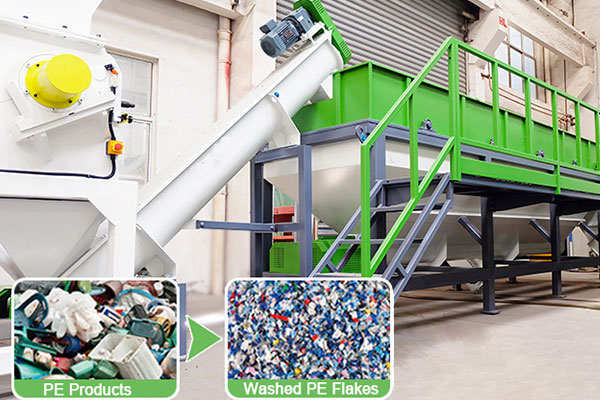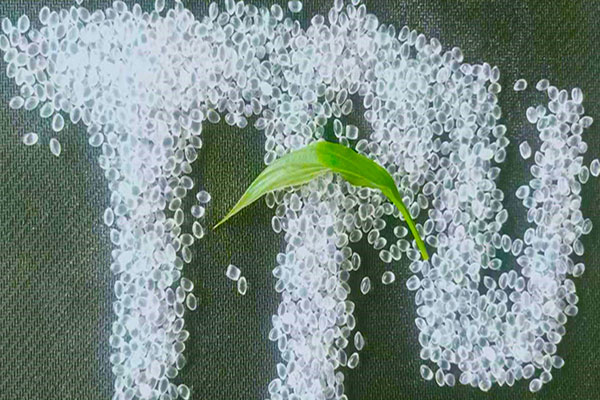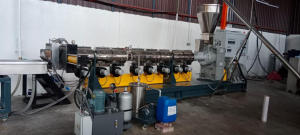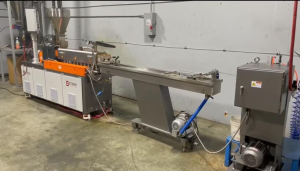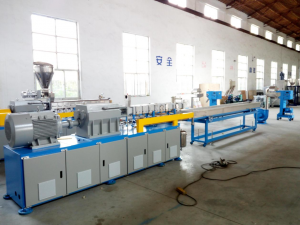China Professional Lab Plastic Extruder Manufacturer — Granuwel
Laboratory twin screw extruder is mainly used in the research and development of polymer plastics, mainly for universities, enterprises and research institutes. The main feature is that the screw diameter is small, which greatly reduces the use of materials in the application and development.
China Professional Lab Extruder Manufacturer — Granuwel
Laboratory twin screw extruder is mainly used in the research and development of polymer plastics, mainly for universities, enterprises and research institutes. The main feature is that the screw diameter is small, which greatly reduces the use of materials in the application and development.
Lab Extruder For Sale
The laboratory twin-screw extruder is mainly used for experimental teaching in laboratories and research institutes of various colleges and universities, or research and development of new products in plastic processing plants, so as to understand the performance of raw materials and auxiliary materials, formula and batching operation.
The extruder adopts the form of twin-screw in order to fully stir the materials so as to achieve the best mixing and plasticizing effect. The twin-screw extruder is composed of frame, main motor, coupling, transmission box, feeding system, mixing and extrusion system, heating and cooling system, lubrication system, vacuum exhaust system and electrical control system.
The laboratory twin-screw extruder granulation line is mainly composed of twin-screw extrusion, die head, cooling unit, drying unit and granulation unit. The cooling unit has two forms: water cooling and air cooling.
Generally, the water cooling mode is to configure the water tank and the drying unit; Air cooling is to configure conveyor belt.
The granulation method depends on the performance of the material. The material is plasticized by the extruder and extruded into a round strip. After water cooling or air cooling, the round strip is pulled to the pelletizer and cut into cylindrical particles.
Application range:
1. Used for mixing and granulation of materials
2. Plasticization and conveying of materials
3. Blending modification and reactive extrusion of composite materials
4. Mixing and mixing of general materials, engineering plastics, elastomers and other materials
5. Polymer Reinforcement Modification
6. Material dehydration, devolatilization and exhaust
Main Features
Prospective
Experimental twin screw granulation is the research and development tool of many enterprises, and it is the vanguard of new products and new processes.
Versatility
With conveying, plasticizing, refining, cutting, vent, building pressure and extusion and other functions, a device can easily achieve most of the development of new materials.
Flexibility
The "building block" design can flexibly combine screw elements according to the material process requirements to achieve the ideal structure. At the same time, worn parts can be partially replaced to reduce maintenance costs.
Accurate measurement and reasonable feeding method
Equipped with a variety of feeding methods, such as volumetric feeding, weight loss feeding, etc., to ensure strict implementation of the formula, to ensure product quality.
Advanced control system
The extusion machine is equipped with advanced and beautiful control system, and the control components are of good quality and high sensitivity. Touch screen and Siemens PLC centralized control system can also be configured according to customer requirements, which is highly intelligent and easy to operate.
Various pelletizing methods
The system is equipped with a variety of granulation methods, such as water-cooled drawing granulation line, underwater granulation line, and air-cooled hot surface granulation line. It can be configured according to different materials and user requirements.
Unique barrel structure design
The barrel can be designed as the upper and lower split structure, which is fast to open and easy to clean, providing first-hand mixed information for the research and development of new materials.
Application fields
01
General plastics, engineering plastics, elastomers and other materials mixing extusion granulation production line.
02
Composite modification and reaction extusion production line.
03
High efficiency mixing production line of polymer alloy.
04
Polymer filling, strengthening and modifying production line.
05
3D filament printing.
Lab Extruder Specifications
| Model | Diameter(mm) | Max.L/D | Speed(rpm) | Power(kw) | Output(kg/h) |
| GTE20B | 22 | 68 | 600 | 3/4 | 3~10 |
| GTE20C | 22 | 68 | 600 | 5.5/7.5 | 5~20 |
| GTE20D | 22 | 68 | 750 | 7.5/11 | 10~30 |
| GTE26B | 26 | 68 | 600 | 5.5/7.5 | 5~20 |
| GTE26C | 26 | 68 | 600 | 11/15 | 10~40 |
| GTE26D | 26 | 68 | 600 | 15/18.5 | 20~60 |
| GTE30B | 30.2 | 68 | 600 | 7.5/11 | 10~30 |
| GTE30C | 30.2 | 68 | 600 | 18.5/22 | 20~60 |
| GTE30D | 30.2 | 68 | 600 | 22/30 | 40~100 |
| GTE35B | 35.6 | 68 | 600 | 15/18.5 | 20~50 |
| GTE35C | 35.6 | 68 | 600 | 30/37 | 60~100 |
| GTE35D | 35.6 | 68 | 600 | 37/45 | 100~150 |
| GTE40B | 41.1 | 68 | 600 | 15/18.5 | 20~50 |
| GTE40C | 41.1 | 68 | 600 | 30/37 | 80~120 |
| GTE40D | 41.1 | 68 | 600 | 37/45 | 100~180 |
Lab Extruder
The laboratory twin-screw extruder is mainly used for experimental teaching in laboratories and research institutes of various colleges and universities, or research and development of new products in plastic processing plants, so as to understand the performance of raw materials and auxiliary materials, formula and batching operation.
The extruder adopts the form of twin-screw in order to fully stir the materials so as to achieve the best mixing and plasticizing effect. The twin-screw extruder is composed of frame, main motor, coupling, transmission box, feeding system, mixing and extrusion system, heating and cooling system, lubrication system, vacuum exhaust system and electrical control system.
The laboratory twin-screw extruder granulation line is mainly composed of twin-screw extrusion, die head, cooling unit, drying unit and granulation unit. The cooling unit has two forms: water cooling and air cooling.
Generally, the water cooling mode is to configure the water tank and the drying unit; Air cooling is to configure conveyor belt.
The granulation method depends on the performance of the material. The material is plasticized by the extruder and extruded into a round strip. After water cooling or air cooling, the round strip is pulled to the pelletizer and cut into cylindrical particles.
Application range:
1. Used for mixing and granulation of materials
2. Plasticization and conveying of materials
3. Blending modification and reactive extrusion of composite materials
4. Mixing and mixing of general materials, engineering plastics, elastomers and other materials
5. Polymer Reinforcement Modification
6. Material dehydration, devolatilization and exhaust
Lab Extruder
The laboratory twin-screw extruder is mainly used for experimental teaching in laboratories and research institutes of various colleges and universities, or research and development of new products in plastic processing plants, so as to understand the performance of raw materials and auxiliary materials, formula and batching operation.
The extruder adopts the form of twin-screw in order to fully stir the materials so as to achieve the best mixing and plasticizing effect. The twin-screw extruder is composed of frame, main motor, coupling, transmission box, feeding system, mixing and extrusion system, heating and cooling system, lubrication system, vacuum exhaust system and electrical control system.
The laboratory twin-screw extruder granulation line is mainly composed of twin-screw extrusion, die head, cooling unit, drying unit and granulation unit. The cooling unit has two forms: water cooling and air cooling.
Generally, the water cooling mode is to configure the water tank and the drying unit; Air cooling is to configure conveyor belt.
The granulation method depends on the performance of the material. The material is plasticized by the extruder and extruded into a round strip. After water cooling or air cooling, the round strip is pulled to the pelletizer and cut into cylindrical particles.
Application range:
1. Used for mixing and granulation of materials
2. Plasticization and conveying of materials
3. Blending modification and reactive extrusion of composite materials
4. Mixing and mixing of general materials, engineering plastics, elastomers and other materials
5. Polymer Reinforcement Modification
6. Material dehydration, devolatilization and exhaust
Main Parts of Twin Screw Extruder

| Material of the gear | 20CrNi2MoA, carburized Hard Face Gear |
| Hardness of gear surface | HRC 58-60 |
| Ratio | 2.5 |
| Speed input/output | 1500rpm/600rpm |
| Output torque to Screw | Involute spline transfer torque |
| Bearings | imported NSK/INA bearings, Integrated thrust bearing assembly |
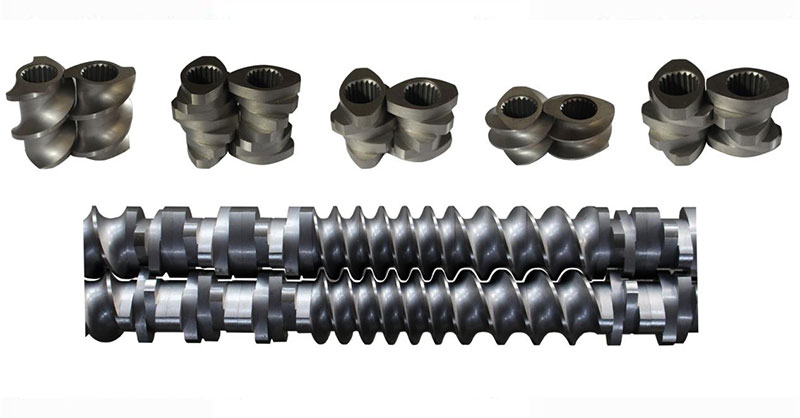
Screw elements materials | W6Mo5Cr4V2, the surface hardness after high temperature vacuum quenching. Hardness: HRC58-64 |
Mainly including | Conveying element, mixing element, reverse element, kneeding element. |
Structure | Co-rotating parallel modular closely intermeshing. |
Core shaft material | high strength alloy steel (40CrNiMoA) material, high strength quality adjustment, hardness 300-350HB, compound forging, improve strength and toughness, ensure the transmission of screw torque. |
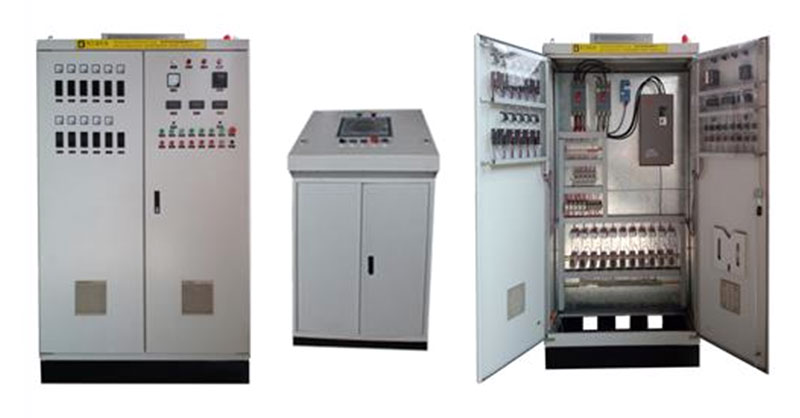
Speed control:
Adopt frequency conversion control with brand frequency converter ABB or YASKAWA.
Temperature control:
Temperature control meter adopt Japanese Omron temperature control meter, double channel, PID algorithm, intelligent type, or adopt PLC(Programmable and Logical Control) with Siemens touch screen and intelligent temperature control meter.
Over loading protection:
The main motor and feeder have the functions of over current, under voltage, phase absence, over heat and shutdown protection.
Interlocking control:
Interlocking control of main motor with feeder, gear box lubricating oil pump, melt pressure sensor, melt temperature controller. Cooling solenoid valve interlocking with water pump to prolong the service life of solenoid valve.
Wide application experience
Biodegradable plastic is a plastic that is degradable by natural microorganisms like bacteria, fungi and algae. An ideal biodegradable plastic is a polymeric material that performs well, can be fully decomposed by microorganisms after disposal, and ultimately becomes a component of the carbon cycle in nature through inorganization.
Color masterbatch is an integral part of the plastics industry. Not only can it give color to plastic products, increase the value of goods, enhance certain performance of plastics, but also can give particular optical properties to materials.
Started in the 1940s, the new functional polymers, which primarily include all kinds of engineering plastics (such as PA, PC, ABS, PET, PPS, etc.), are already used in electronics, electrical appliances, automotive, transportation, aviation, defense and military industries, etc.
Filler masterbatch is available for processing plastic films, garbage bags, shopping bags, undershirt bags, packaging bags, etc. It has excellent dispersion, blown film without white and black spots, and high fineness to ensure the luster and toughness of the product.
Non-crystallization dry PET sheet extrusion offers several advantages. It is used to produce PET/PLA sheet without the energy consumption of pre-drying crystallization and adapting to the production of materials with high output, low energy consumption and high plastic quality.
The PET waste plastic bottle cleaning line means that the waste plastic bottles are de-labeled by the de-labeling machine, pulverized by the crusher, and then processed by cleaning and drying equipment, so that the recycling and integration of waste plastic bottles becomes a new type.
Thermoplastic Elastomer has extensive adjustable hardness and physical properties. Also, it doesn’t need to be vulcanized, is recyclable, and can reduce costs, so the application areas are relatively wide including seals, automobile interiors, adhesive coated materials, various pipe fittings, etc.
Ask For A Quick Quote
Ask For lab scale extruder price
If you would like to have a question then get in touch today, we are ready to assist 24/7.
We welcome your cooperation and we will develop with you.
What Is A Lab Scale Twin Screw Extruder?
Lab scale twin screw extruder is primarily used for the research and development of polymer plastics. Laboratory extruders are used for testing new materials or new formulation. With a Laboratory extruder, you can produce low volumes or do pilot tests. And it is typically found in the research and development of universities, companies and research institutes. The main feature of lab twin screw extruder is the small diameter of the screw, which largely reduces the use of materials in the application and development.
Currently, the world trend of laboratory twin screw extruders is high torque, high speed and low energy consumption, and the result of high speed is high productivity. The Granuwel GTE series lab twin screw extruder belongs to this category and can reach a maximum speed of 750 rpm. As a result, it has distinct advantages in processing high-viscosity and heat-sensitive materials.
Lab Single Screw Extruder VS. Lab Twin Screw Extruder
The lab single-screw extruder adopts the integral structure, which consists of three parts: charging section, melting section and metering section.
Compared with the lab single-screw extruder, the laboratory twin-screw extruder has more advantages.
(1) The average dwell time of the material is short. The distribution of the dwell time is narrow, generally between 1 and 10 minutes.
(2) The mixing of materials will be better under the action of high shear and kneading force.
(3) Lab twin screw extruder has high self-cleaning ability, the two screws engage each other and scrape each other to reduce the waste of materials.
(4) The lab scale twin-screw extruder has strong controllability of operating parameters, the screws in each section can be matched at will, with flexible and changeable characteristics, and the die opening can be changed at will according to the shape.
(5) Mixing ability is strengthened; distributed mixing and dispersive mixing are interlaced, making the mixing of drug and carrier materials more uniform.
What Are The Common Types of Laboratory Extruders?
By feeding method: Laboratory extruders can be divided into cold-feed extruders and hot-feed extruders.
Hot feed extruders are mostly used as preforming machines or filtering rubber equipment in production, the production efficiency of hot feed extruders is usually higher than cold feed extruders, but they are not equipped with temperature control system, so the production stability is not as good as cold feed rubber extruders.
The advantage of cold feed rubber extruder is that it can continuously feed to ensure the pressure in the screw barrel, which allows good pressure constancy in production. Cold feed extruder usually has a much higher configuration than the hot feed extruder, and the cost is also much more expensive.
Nowadays, cold-feed rubber extruders are mostly used for the extrusion and production of finished products, and the design of rubber extruders varies according to the specificity of the extruded rubber.
Granuwel laboratory extruder products are fully functional and easy to operate, and can be applied to formula development, process optimization, quality control, innovation research, technician and student training, etc.
Benefits of a Laboratory Twin Screw Extruder
There are several key benefits of using a laboratory twin screw extruder for research and development.
Precise Control of Material Properties
The laboratory twin screw extruder allows for precise control of material properties, including temperature, pressure, and mixing. This is important for ensuring that materials are processed correctly and for controlling the final material properties.
Reduced Development Time and Costs
The laboratory twin screw extruder allows for rapid prototyping and development, reducing the time and costs associated with traditional manufacturing methods.
Improved Material Properties
The laboratory twin screw extruder can be used to create materials with improved properties, such as increased strength, flexibility, and durability.
Precise Control of Material Properties
The laboratory twin screw extruder allows for precise control of material properties, including temperature, pressure, and mixing. This is important for ensuring that materials are processed correctly and for controlling the final material properties.
Reduced Development Time and Costs
The laboratory twin screw extruder allows for rapid prototyping and development, reducing the time and costs associated with traditional manufacturing methods.
Improved Material Properties
The laboratory twin screw extruder can be used to create materials with improved properties, such as increased strength, flexibility, and durability.
Features of a Laboratory Twin Screw Extruder
There are several key features of a laboratory twin screw extruder that make it a valuable tool for researchers and developers.
Precise Temperature Control
A laboratory twin screw extruder is equipped with heating and cooling zones along the barrel, allowing for precise control of the material temperature. This is important for ensuring that the material is processed correctly and for controlling the material properties.
High Shear Mixing
The screws of a laboratory twin screw extruder have a specific profile that creates high shear forces, allowing for thorough mixing of materials. This is particularly useful for materials that are difficult to mix, such as those with high viscosity.
Real-Time Monitoring and Control
A laboratory twin screw extruder is equipped with a range of sensors that monitor the process in real-time, allowing for precise control of temperature, pressure, and other variables.
The visual barrel can be used to detect the situation of melting, blending and shearing effect of materials in real time and can achieve a variety of material compatibility online detection.
Versatility
A laboratory twin screw extruder is a versatile tool that can process a wide range of materials, including polymers, composites, and biomaterials. It can also be used for a variety of applications, including compounding, extrusion, and reactive processing.
Lab Twin Screw Extruder Specifications
When choosing a lab twin screw extruder, several specifications should be considered. Here are the key parameters to look for:
Screw Configuration
The screw configuration is the design and arrangement of the twin screws inside the barrel. There are several types of screw configurations, each with its advantages and disadvantages. The most common configurations are:
Co-rotating: Both screws rotate in the same direction, allowing for high shear and mixing capabilities. Co-rotating screw configurations are suitable for processing materials with high viscosity and high filler content.
Counter-rotating: The screws rotate in opposite directions, which creates a shearing action that improves mixing and melting. Counter-rotating screw configurations are suitable for processing materials with low viscosity and high screw speed.
Intermeshing: The screws have intermeshing lobes that mesh with each other, providing high shear and mixing capabilities. Intermeshing screw configurations are suitable for processing materials with low to medium viscosity.
Screw Diameter
The screw diameter refers to the diameter of the screws inside the barrel. It is usually measured in millimeters (mm) or inches (in). The screw diameter affects the extruder’s throughput, mixing, and pressure buildup. A larger diameter screw can process more material per unit of time, but it also requires more power and can create more shear stress. A smaller diameter screw can provide better mixing and pressure buildup, but it may not have enough throughput for high-volume production.
Screw Length
The screw length refers to the length of the screws inside the barrel. It is usually measured in multiples of the screw diameter (L/D ratio). The screw length affects the residence time of the material inside the extruder, which influences the degree of mixing and melting. A longer screw can provide more mixing and melting, but it also requires more power and can create more shear stress. A shorter screw can provide faster processing time and less shear stress, but it may not achieve optimal mixing and melting.
Barrel Configuration
The barrel configuration refers to the shape and design of the extruder’s barrel. There are several types of barrel configurations, including:
Smooth bore: The barrel has a smooth inner surface, which provides low shear and less mixing. Smooth bore barrels are suitable for processing materials with high filler content and low shear sensitivity.
Various forms of cylinder structure, can realize the side feeding, liquid filling, exhaust, long glass fiber introduction, short glass fiber lateral addition, side forced exhaust and other functions, so as to achieve the purpose of multi-purpose with one machine, one machine with multi-functions.
Motor Power
The motor power refers to the amount of power required to rotate the screws inside the barrel. It is usually measured in kilowatts (kW) or horsepower (hp). The motor power affects the extruder’s throughput, mixing, and pressure buildup. A higher motor power can providea higher throughput and better mixing, but it also requires more energy and can generate more heat.
Heating and Cooling
Heating and cooling systems are important for controlling the temperature inside the barrel. Most lab twin screw extruders come with a heating system that includes heating elements and temperature sensors. The heating system can be used to melt the material and maintain it at the desired temperature. A cooling system is also required to prevent overheating of the extruder and maintain the temperature of the material during processing.
Control System
The control system is responsible for controlling the extruder’s operation and monitoring the process parameters. It includes a human-machine interface (HMI), a programmable logic controller (PLC), and sensors. The control system can be used to set the process parameters, such as screw speed, temperature, and pressure, and to monitor the extruder’s performance. Some lab twin screw extruders also come with data acquisition systems that can record and analyze the process data.
Here are some questions that our customers are very concerned about,
and we have answered them one by one.
We are a factory, professional in manufacturing and sales of high polymer extruders.
No.228, Qingchi Rd, Xinyue Street, Hushu Town, Jiangning District, Nanjing City, Jiangsu Province, China.
Usually 30~40days after receipt of the deposit.
T/T, L/C, Western union, Paypal.
Our warranty time is one year,but normally they will keep for a longer service time. Our machines’ main parts are made of high tool steel by special quenching treatment, with high corrosion resistance and wear resistance.
PE, ABS, PS, EVA, PET, PP, etc. Filled with CACO3, talc, TIO2, carbon black etc, TPR, TPV TPU thermoplastic elastomers; EVA and hot-melt adhesives;
Qualified products with competitive price.
Qualified spare parts and brand components, perfected pressing procedure and completed trial testing before shipping.
Nude packing or wooden box packing.
Front debugging, pre-job training and experienced engineer oversea installation service provided.
Training on buyer’s factory is provided.
Suitable machine will be supplied based on buyer’s requirements before order placed.
Experienced machanical designer customized-design provided.

